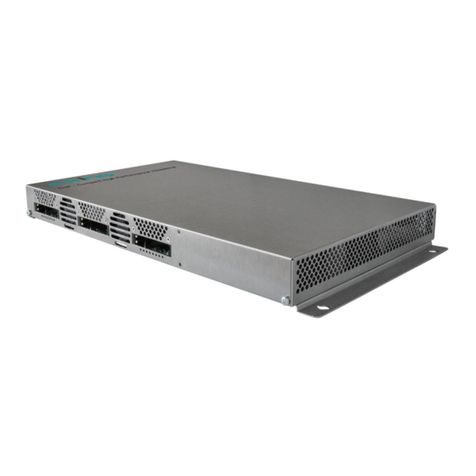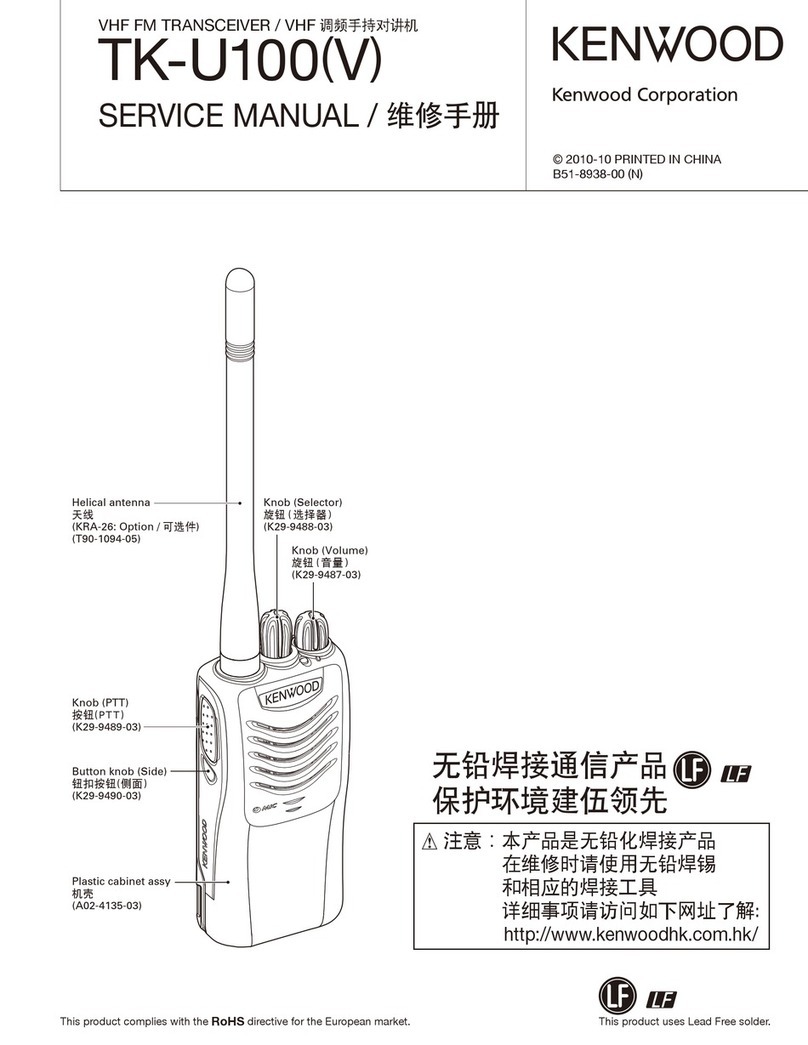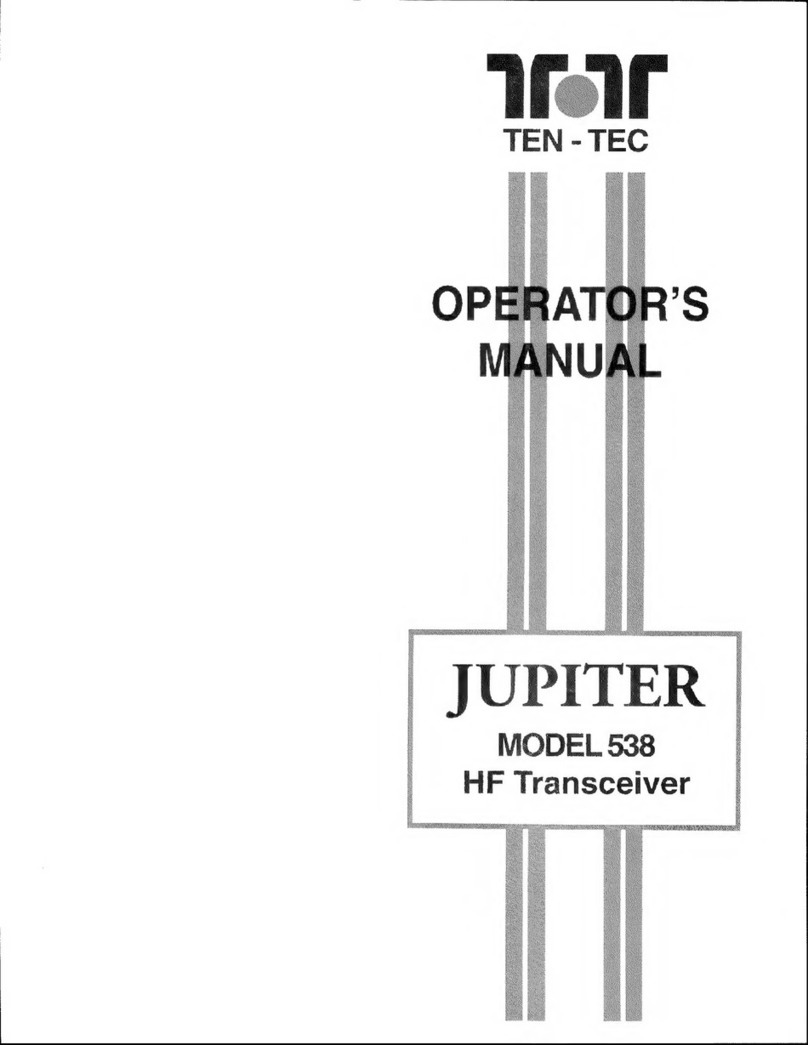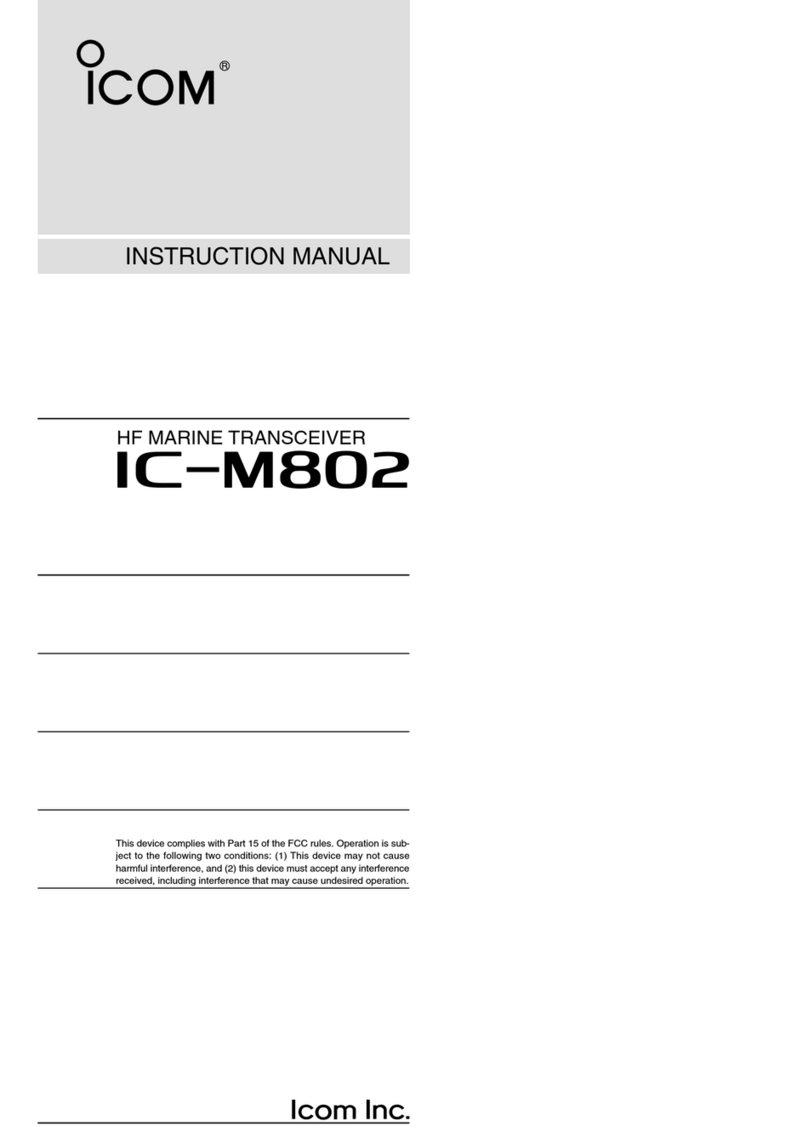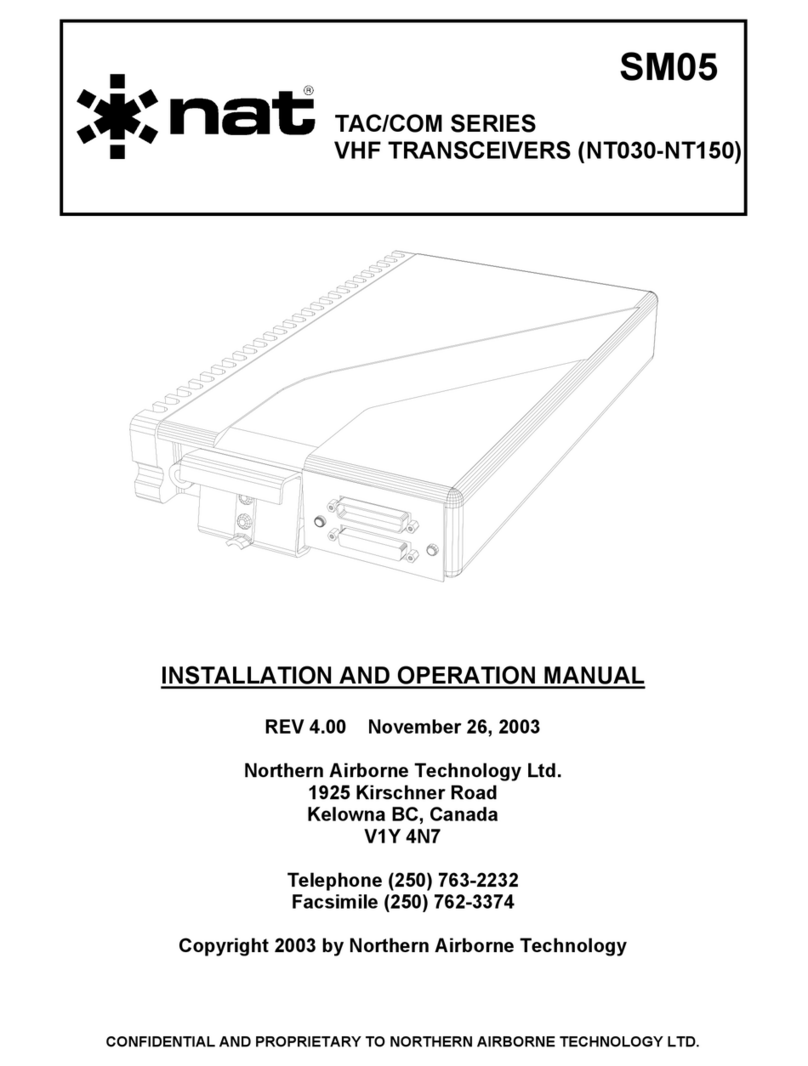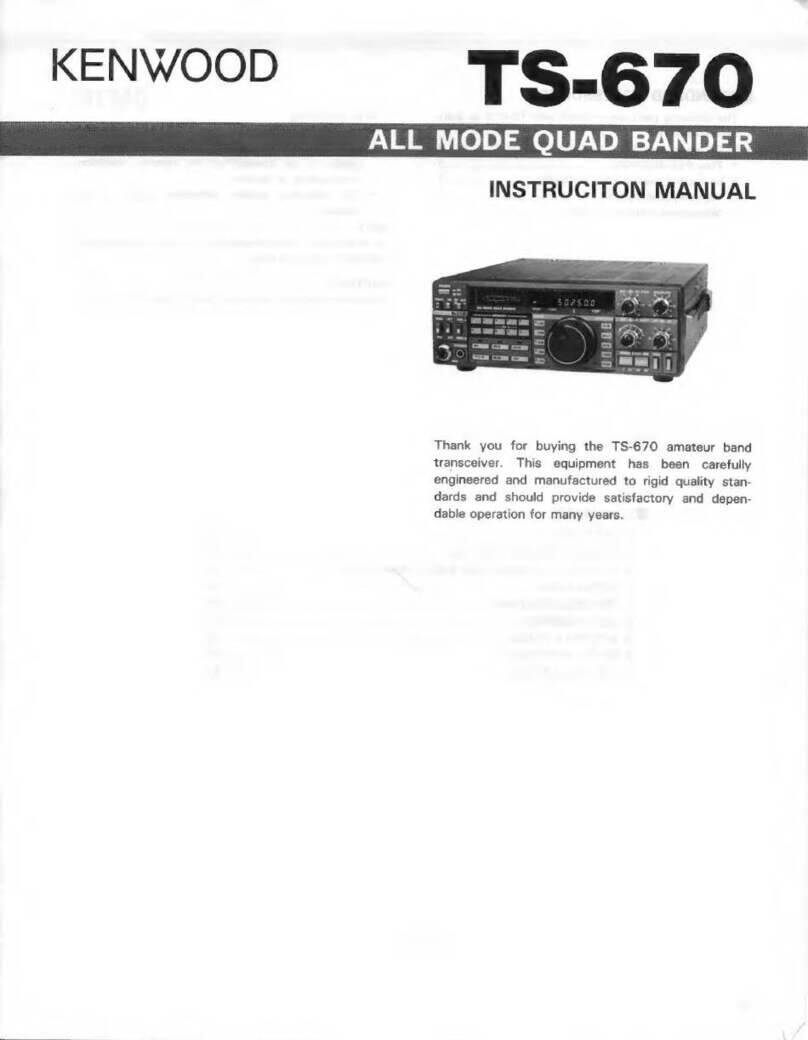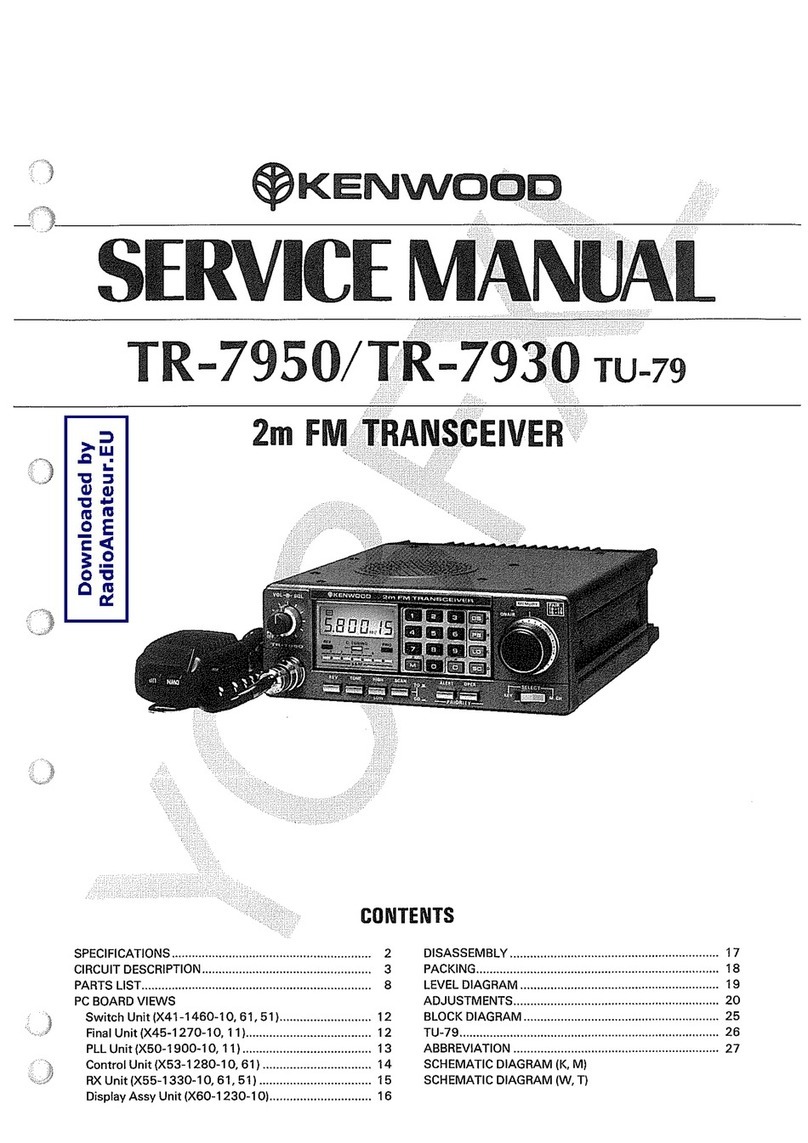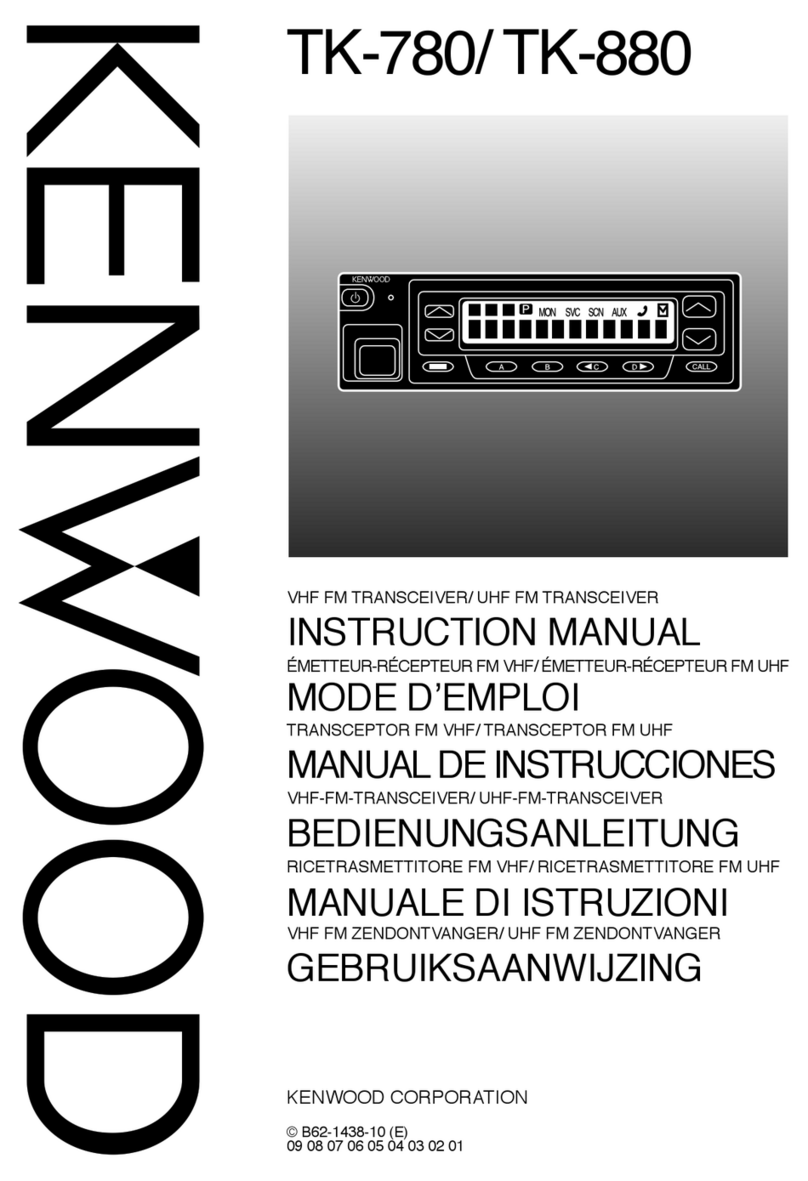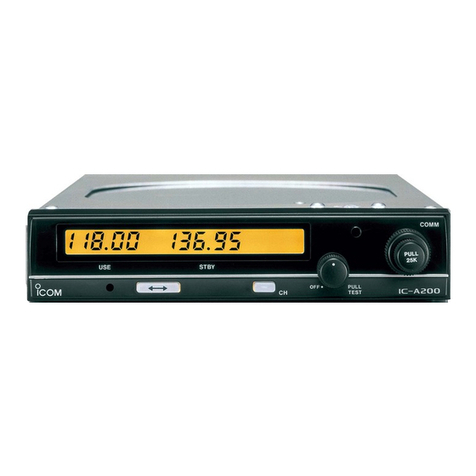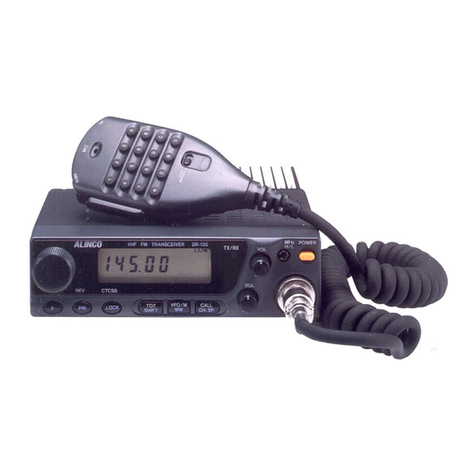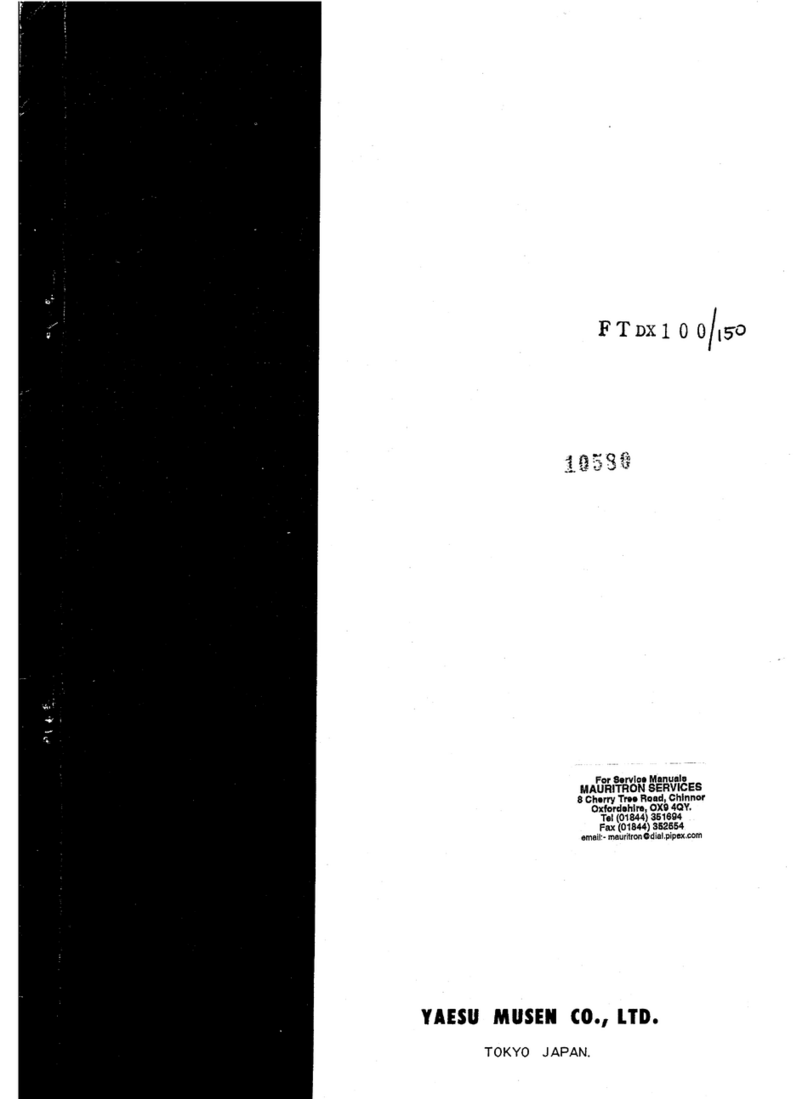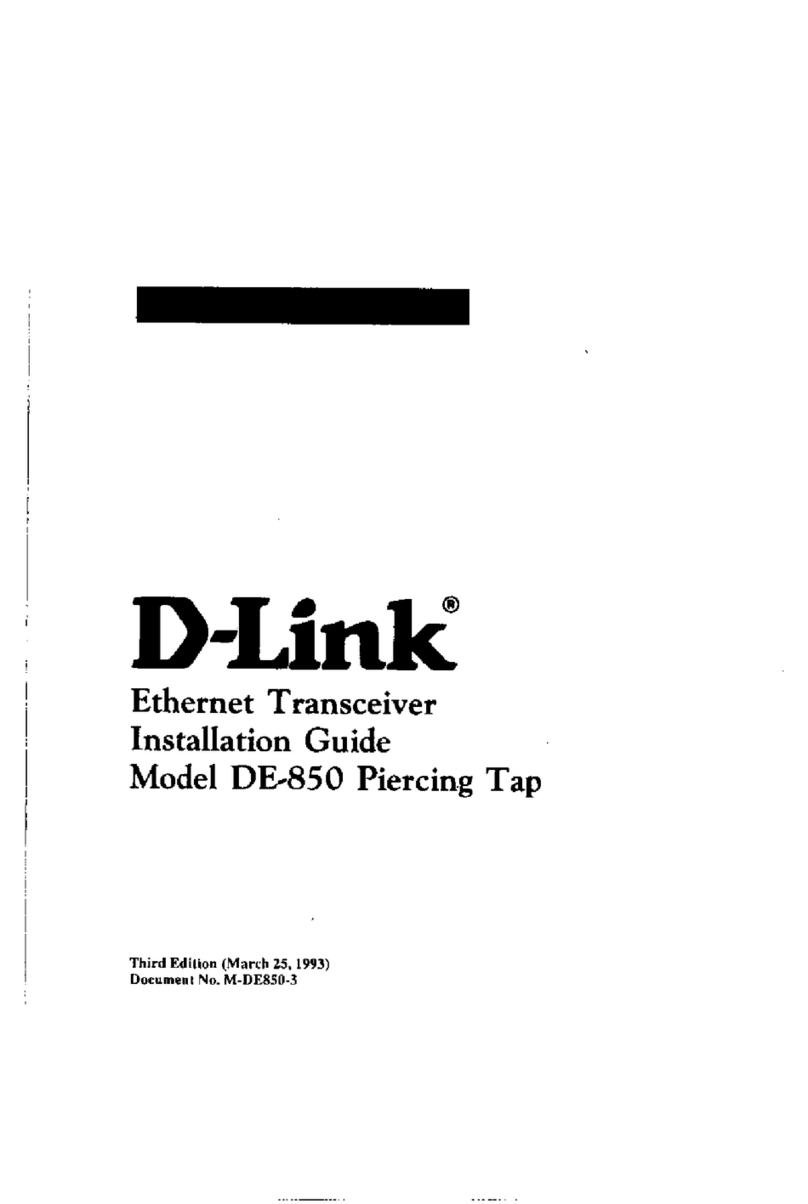axing SFPB 10-1023 User manual

Seite 1 von 2 | AXING-BA_SFPB.pdf | 2022-08-29
Technische Verbesserungen, Änderungen im Design, Druckfehler und Irrtümer
vorbehalten.
Hersteller
AXING AG
Gewerbehaus Moskau
8262 Ramsen
EWR-Kontaktadresse
Bechler GmbH
Am Rebberg 44
78239 Rielasingen
EU-Konformitätserklärung
Hiermit erklärt die AXING AG, dass die Produkte mit CE-Kennzeichnung den
geltenden EU-weiten Anforderungen entsprechen.
WEEE Nr. DE26869279 | Elektrische und elektronische Komponenten nicht
mit dem Restmüll, sondern separat entsorgen.
SFPB 10-1023 | SFPB 10-1032
SFPB 10-2023 | SFPB 10-2032
premium-line
Bidirektionale SFP+ Transceiver
Betriebsanleitung
Technische Daten:
<
Typ SFPB 10-1023 SFPB 10-1032 SFPB 10-2023 SFPB 10-2032
Transmitter
Wellenlänge (TX 1270) 1260…1280nm - 1260…1280nm -
Wellenlänge (TX 1330) - 1320…1340nm - 1320…1340nm
Bandbreite @–20dB ≤ 1nm
Optische Ausgangsleistung –8,2…0,5 dBm –8,2…0,5 dBm –2…3 dBm –2…3 dBm
Extinktionsverhältnis ≥ 3,5 dB
SMSR ≥ 30 dB
Receiver
Wellenlänge (RX 1270) - 1260…1280nm - 1260…1280nm
Wellenlänge (RX 1330) 1320…1340nm - 1320…1340nm -
Empfindlichkeit –14,4 dBm* –14,4 dBm* –15 dBm* –15 dBm*
Überlast Eingang ≥ 1dBm
LOSA ≥ –38dBm
LOSD ≤ –30dBm
Hysterese 0,5…5dB**
Datenübertragung
Bitrate 10,3 Gb/s
BER < 10E–12
Anwendungen 10GBASE-LR/LW
10G Ethernet
OBSAI (3,072 Gb/s, 6,144 Gb/s)
CPRI (2,4576 Gb/s, 4,9152 Gb/s, 6,144 Gb/s, 9,8304 Gb/s)
Kompatibilität IEEE 802.3ae
SFF-8431 Rev 4
SFF-8472 Rev 10
Allgemein
Betriebsspannung 3,14…3,46V
Betriebstemperaturbereich 0…70°C
Lagertemperaturbereich –40…+85°C
Betriebs-Luftfeuchtigkeit (nichtkondensierend) 5…95%
Anmerkungen * Gemessen mit einem PRBS 2E31–1 Testmuster, @10,3 Gb/s, EX = 5 dB, BER < 10E–12.
** Die LOS-Hysterese zur Minimierung des Prellens auf der Ausgangsleitung. Im Prinzip garantiert die Hysterese allein keinen
prellungsfreien Betrieb.

Seite 2 von 2 | AXING-BA_SFPB.pdf | 2022-08-29
Anschluss:
Die SFP+-Module sind Hotplug-fähig. Sie dürfen eingebaut werden, während
der Host (z.B. Switch oder CMTS) eingeschaltet ist.
Nehmen Sie das SFP+ Modul aus der Verpackung.
Entfernen Sie ggf. die Schutzkappe des SFP+ Ports z. B. am CMTS oder
Switch. Bewahren Sie die Schutzklappen für die künftige Verwendung auf.
Führen Sie das SFP+ Modul in den Port ein, bis es einrastet.
Anschließen des Kabels
Entfernen Sie erst unmittelbar vor dem Anschließen des Glasfaserkabels die
Schutzkappen vom LC/UPC-Stecker und vom SFP+ Modul.
Bewahren Sie die Schutzklappen auf.
Stecken Sie den LC/UPC-Stecker in die Buchse des SFP+ Moduls bis er
einrastet.
Entfernen des Moduls aus dem SFP-Port des Hosts
Entfernen Sie das Glasfaserkabel und setzen Sie die Staubschutzkappen des
SFPB-Moduls und der Glasfaser auf.
Klappen Sie den Bügel zum Entriegeln nach vorne, bis Sie einen leichten
Anschlag spüren.
Ziehen Sie das Modul z. B. aus dem Switch heraus.
Setzen Sie die Schutzkappe auf den SFP+ Port.
Beachten Sie die dem Gerät beiliegenden Sicherheitshinweise!
Diese sind auch unter der folgenden Internetadresse abrufbar:
https://download.axing.com/BAs/Sicherheitshinweise_9sprachig.pdf
Benutzen Sie das Gerät ausschließlich wie in dieser Betriebsanleitung
beschrieben und insbesondere nach dem Stand der Technik.
Wird das Gerät für andere Einsätze verwendet, wird keine Gewährleis-
tung übernommen!
Entfernen Sie die Staubschutzkappen sowohl des SFPB-Moduls als auch der
Glasfaser erst unmittelbar vor der Installation des Glasfaserkabels.
Installieren und deinstallieren Sie das Glasfaserkabel nicht häufig. Dies
kann zu einer Beschädigung des Kabels führen und die Leistung der
Übertragung beeinträchtigt. Auch das häufige Ein- und Ausbauen der
optischen Transceiver verkürzt deren Lebensdauer.
Verwendungsbereich:
Die Bidirektionalen SFP+ Transceiver werden immer paarweise verwendet:
9SFPB 10-1023 mit dem SFPB 10-1032
9SFPB 10-2023 mit dem SFPB 10-2032
Das eine Modul sendet mit 1270 nm und empfängt mit 1330 nm, das andere
Modul sendet mit 1330 nm und empfängt mit 1270 nm.
Sie können einen AXING SFP+ Transceiver auch mit einem passenden
Fremdfabrikat verwenden. In diesem Fall müssen die technischen
Parameter der Module (wie Wellenlänge, optische Ausgangsleistung,
Empfindlichkeit usw.) aufeinander abgestimmt sein. Um sicherzugehen,
dass SFP-Module unterschiedlicher Hersteller auch wirklich perfekt zusammen
funktionieren, empfiehlt es sich, einen Interoperabilitätstest durchzuführen.
Hotplug-fähiger 20-poliger Steckverbinder
Staubschutzkappe vor LC/UPC-Anschluss
Erst unmittelbar vor dem Anschließen des Glasfaserkabels
entfernen!
Bügel zum Entriegeln des
eingebauten Moduls
Hinweise:
9Die SFP+ Transceiver sind von Ihrer Sendeleistung und Empfindlichkeit auf
große LWL-Längen abgestimmt.
9Dennoch können SFPB 10-1023 und SFPB 10-1032 auch über kurze Patch-
Kabel bedenkenlos miteinander verbunden werden (z. B. in Datacenter-
Anwendungen)
9SFPB 10-2023 und SFPB 10-2032 senden aber mit höherer Leistung,
dort sollten 3 dB Dämpfung (z. B. 10 km LWL-Strecke) dazwischen
sein.
Farbkennzeichnung:
Violett = TX 1330
Blau = TX 1270
≤ 10 km
SFPB 10-1023 SFPB 10-1032
≥ 10 km … ≤ 20 km
SFPB 10-2023 SFPB 10-2032
Host Host

Page 1 of 2 | AXING-BA_SFPB.pdf | 2022-08-29
Technical improvements, changes in design, printing and other errors reserved.
Manufacturer
AXING AG
Gewerbehaus Moskau
8262 Ramsen
EEA contact address
Bechler GmbH
Am Rebberg 44
78239 Rielasingen
EU Declaration of Conformity
Hereby AXING AG declares that the CE marked products comply with the
valid EU guidelines.
WEEE Nr. DE26869279 | Electrical and electronic components must not be
disposed of as residual waste, it must be disposed of separately.
SFPB 10-1023 | SFPB 10-1032
SFPB 10-2023 | SFPB 10-2032
premium-line
Bidirectional SFP+ Transceivers
Operation instructions
Technical data:
Type SFPB 10-1023 SFPB 10-1032 SFPB 10-2023 SFPB 10-2032
Transmitter
Wavelength (TX 1270) 1260…1280nm - 1260…1280nm -
Wavelength (TX 1330) - 1320…1340nm - 1320…1340nm
Bandwidth@–20dB ≤ 1nm
Optical Output Power –8.2…0.5 dBm –8.2 … 0.5 dBm –2 … 3 dBm –2 … 3 dBm
Extinction Ratio (ER) ≥ 3.5 dB
SMSR ≥ 30 dB
Receiver
Wavelength (RX 1270) - 1260…1280nm - 1260…1280nm
Wavelength (RX 1330) 1320…1340nm - 1320…1340nm -
Sensitivity –14.4 dBm* –14.4 dBm* –15 dBm* –15 dBm*
Overload Input ≥ 1dBm
LOSA ≥ –38dBm
LOSD ≤ –30dBm
Hysteresis 0.5…5dB**
Data transmission
Bit rate 10.3Gb/s
BER < 10E–12
Applications 10GBASE-LR/LW
10G Ethernet
OBSAI (3.072 Gb/s, 6.144 Gb/s)
CPRI (2.4576 Gb/s, 4.9152 Gb/s, 6.144 Gb/s, 9.8304 Gb/s)
Compliances IEEE 802.3ae
SFF-8431 Rev 4
SFF-8472 Rev 10
General
Operating voltage 3.14 … 3.46 V
Operating temperature range 0…70°C
Storage temperature range –40…+85°C
Operating humidity (non-condensing) 5…95%
Comments * Measured with a PRBS 2E31–1 test pattern, @10.3 Gb/s, EX = 5 dB, BER < 10E–12.
** The LOS Hysteresis to minimize “chatter” on the output line. In principle, hysteresis alone does not guarantee chatter-free
operation.

Page 2 of 2 | AXING-BA_SFPB.pdf | 2022-08-29
Observe the safety instructions supplied with the device!
They are also available at the following Internet address:
https://download.axing.com/BAs/Sicherheitshinweise_9sprachig.pdf
Use the device only as described in these operating instructions and in
particular in accordance with the state of the art.
If the device is used for other purposes, no warranty will be assumed!
Connection:
The SFP+ modules are hot-pluggable. They may be installed while the host (e. g.
switch or CMTS) is switched on.
Take the SFP+ module out of the packaging.
If necessary, remove the protective cap of the SFP+ port e.g. on the CMTS or
switch. Keep the protective caps for future use.
Insert the SFP+ module into the port until it clicks into place.
Connecting the cable
Do not remove the protective caps from the LC/UPC connector and SFP+
module until immediately before connecting the fibre optic cable.
Keep the protective caps.
Insert the LC/UPC connector into the socket of the SFP+ module until it
clicks into place.
Removing the module from the SFP port of the host
Remove the fibre optic cable and put on the protective caps of the SFPB
module and the fibre optic.
Fold the bracket forward to unlock it until you feel a slight stop.
Pull the module for example out of the switch.
Place the protective cap on the SFP+ port.
Do not remove the dust caps from both the SFPB module and the fibre optic
cable until immediately before installing the fibre optic cable.
Do not install and uninstall the fibre optic cable frequently. This may
damage the cable and affect the performance of the transmission. Also,
frequent installation and removal of the optical transceivers will shorten
their life.
Field of application:
The bidirectional SFP+ transceivers are always used in pairs:
9SFPB 10-1023 with the SFPB 10-1032
9SFPB 10-2023 with the SFPB 10-2032
One module transmits at 1270 nm and receives at 1330 nm, the other module
transmits at 1330 nm and receives at 1270 nm.
You can also use an AXING SFP+ transceiver with a suitable third-party
module. In this case, the technical parameters of the modules (such as
wavelength, optical output power, sensitivity, etc.) must be matched. To
make sure that SFP modules from different manufacturers really work perfectly
together, it is recommended to carry out an interoperability test.
Hot-pluggable 20-pin connector
Dust cap on LC/UPC connector
Please remove only immediately before
connecting the fiber optic cable!
Bracket for unlocking the
built-in module
≤ 10 km
SFPB 10-1023 SFPB 10-1032
≥ 10 km … ≤ 20 km
SFPB 10-2023 SFPB 10-2032
Notes:
9The transmission power and sensitivity of the SFP+ transceivers are
matched to long fibre optic lengths.
9Nevertheless, SFPB 10-1023 and SFPB 10-1032 can also be connected to
each other via short patch cables without any problems (e.g. in data centre
applications).
9SFPB 10-2023 and SFPB 10-2032 transmit with higher power,
however, there should be 3 dB attenuation (e. g. 10 km fibre optic
distance) in between.
Host Host
Colour coding:
Violet = TX 1330
Blue = TX 1270
This manual suits for next models
3
Table of contents
Languages:
Other axing Transceiver manuals
